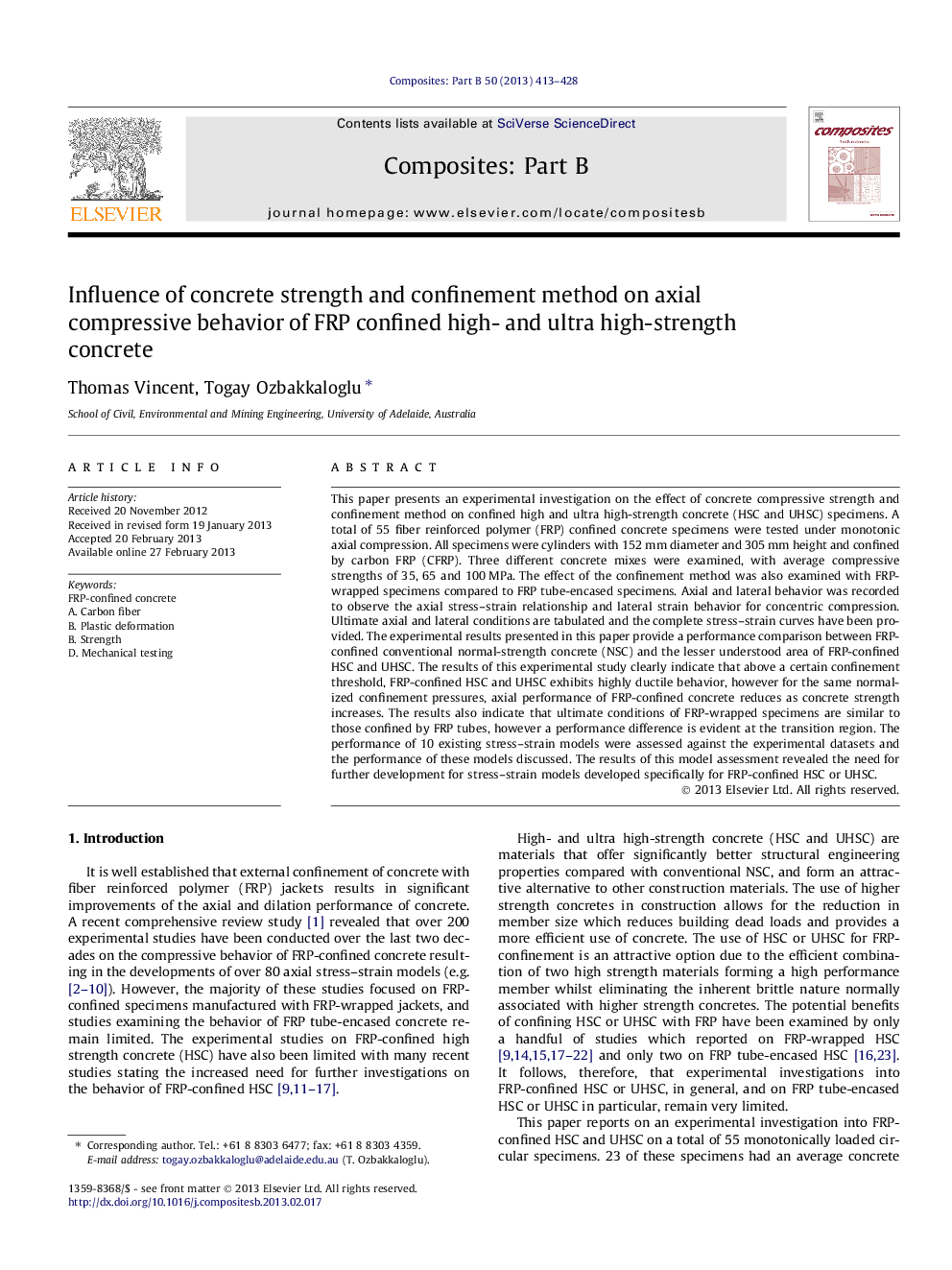| Article ID | Journal | Published Year | Pages | File Type |
|---|---|---|---|---|
| 818299 | Composites Part B: Engineering | 2013 | 16 Pages |
Abstract
This paper presents an experimental investigation on the effect of concrete compressive strength and confinement method on confined high and ultra high-strength concrete (HSC and UHSC) specimens. A total of 55 fiber reinforced polymer (FRP) confined concrete specimens were tested under monotonic axial compression. All specimens were cylinders with 152Â mm diameter and 305Â mm height and confined by carbon FRP (CFRP). Three different concrete mixes were examined, with average compressive strengths of 35, 65 and 100Â MPa. The effect of the confinement method was also examined with FRP-wrapped specimens compared to FRP tube-encased specimens. Axial and lateral behavior was recorded to observe the axial stress-strain relationship and lateral strain behavior for concentric compression. Ultimate axial and lateral conditions are tabulated and the complete stress-strain curves have been provided. The experimental results presented in this paper provide a performance comparison between FRP-confined conventional normal-strength concrete (NSC) and the lesser understood area of FRP-confined HSC and UHSC. The results of this experimental study clearly indicate that above a certain confinement threshold, FRP-confined HSC and UHSC exhibits highly ductile behavior, however for the same normalized confinement pressures, axial performance of FRP-confined concrete reduces as concrete strength increases. The results also indicate that ultimate conditions of FRP-wrapped specimens are similar to those confined by FRP tubes, however a performance difference is evident at the transition region. The performance of 10 existing stress-strain models were assessed against the experimental datasets and the performance of these models discussed. The results of this model assessment revealed the need for further development for stress-strain models developed specifically for FRP-confined HSC or UHSC.
Related Topics
Physical Sciences and Engineering
Engineering
Engineering (General)
Authors
Thomas Vincent, Togay Ozbakkaloglu,
